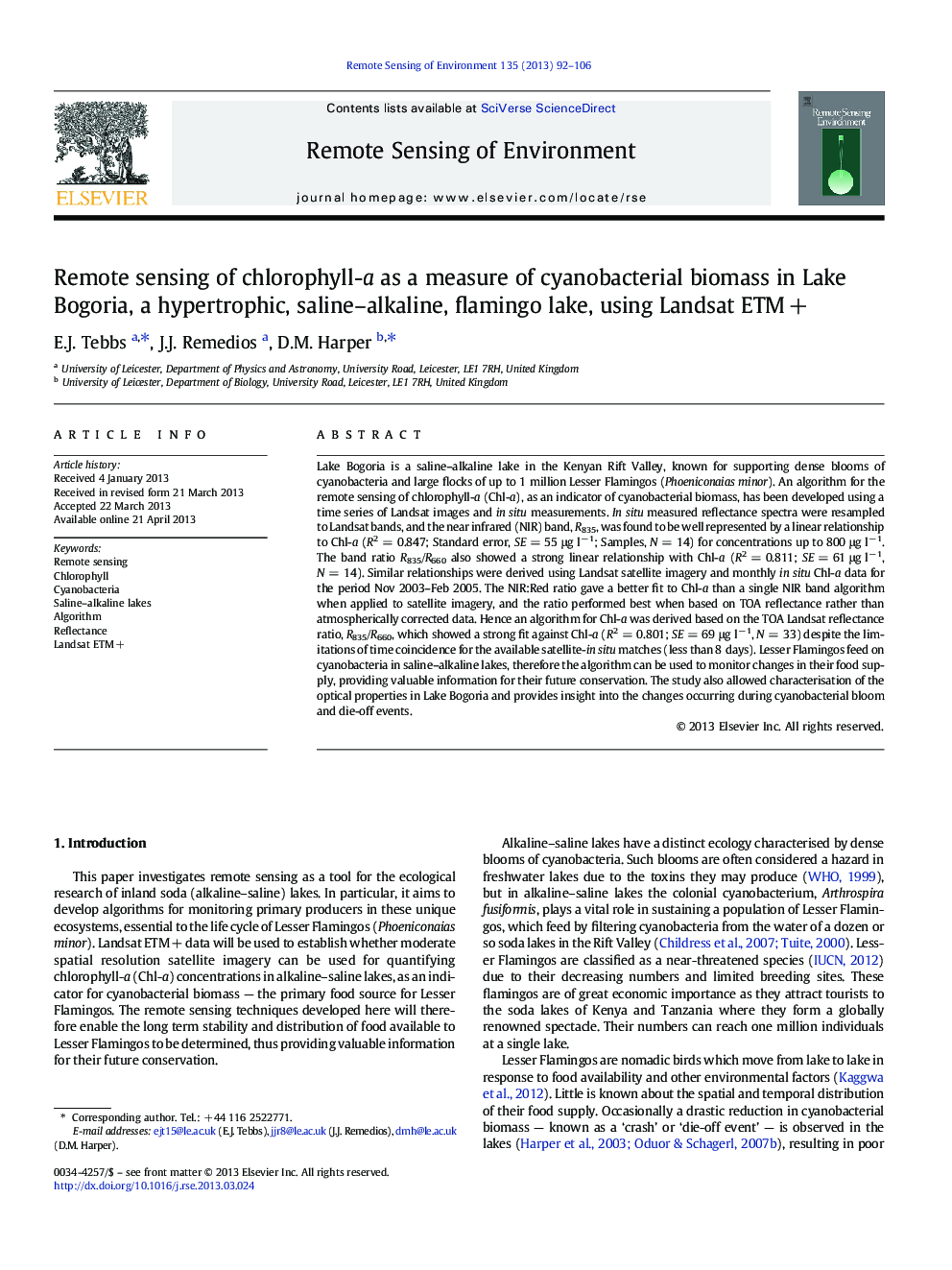| Article ID | Journal | Published Year | Pages | File Type |
|---|---|---|---|---|
| 6347298 | Remote Sensing of Environment | 2013 | 15 Pages |
Abstract
Lake Bogoria is a saline-alkaline lake in the Kenyan Rift Valley, known for supporting dense blooms of cyanobacteria and large flocks of up to 1 million Lesser Flamingos (Phoeniconaias minor). An algorithm for the remote sensing of chlorophyll-a (Chl-a), as an indicator of cyanobacterial biomass, has been developed using a time series of Landsat images and in situ measurements. In situ measured reflectance spectra were resampled to Landsat bands, and the near infrared (NIR) band, R835, was found to be well represented by a linear relationship to Chl-a (R2 = 0.847; Standard error, SE = 55 μg lâ 1; Samples, N = 14) for concentrations up to 800 μg lâ 1. The band ratio R835/R660 also showed a strong linear relationship with Chl-a (R2 = 0.811; SE = 61 μg lâ 1, N = 14). Similar relationships were derived using Landsat satellite imagery and monthly in situ Chl-a data for the period Nov 2003-Feb 2005. The NIR:Red ratio gave a better fit to Chl-a than a single NIR band algorithm when applied to satellite imagery, and the ratio performed best when based on TOA reflectance rather than atmospherically corrected data. Hence an algorithm for Chl-a was derived based on the TOA Landsat reflectance ratio, R835/R660, which showed a strong fit against Chl-a (R2 = 0.801; SE = 69 μg lâ 1, N = 33) despite the limitations of time coincidence for the available satellite-in situ matches (less than 8 days). Lesser Flamingos feed on cyanobacteria in saline-alkaline lakes, therefore the algorithm can be used to monitor changes in their food supply, providing valuable information for their future conservation. The study also allowed characterisation of the optical properties in Lake Bogoria and provides insight into the changes occurring during cyanobacterial bloom and die-off events.
Related Topics
Physical Sciences and Engineering
Earth and Planetary Sciences
Computers in Earth Sciences
Authors
E.J. Tebbs, J.J. Remedios, D.M. Harper,
